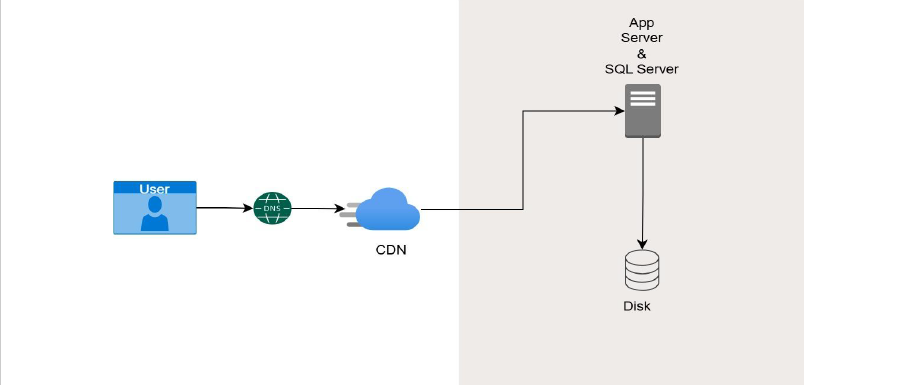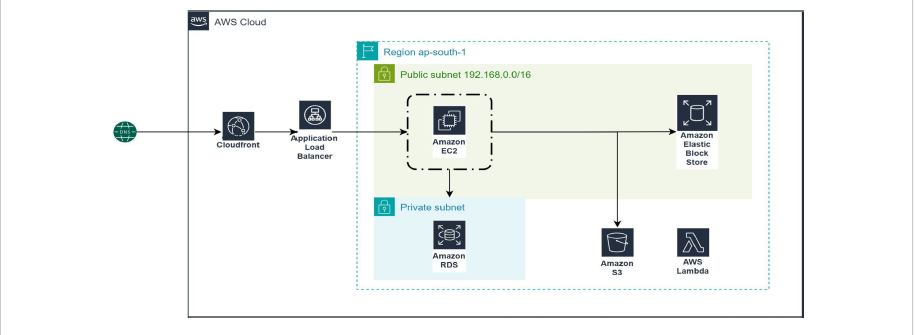Case Study: AWS Primary Storage for NIIR Project Consultancy Services
Introduction:NIIR Project Consultancy Services previously operated on a private cloud but faced challenges with data storage. To overcome these issues, they migrated to AWS for improved storage,scalability and efficiency.
This case study highlights the journey of NIIR Project Consultancy Services, a mid-sized enterprise that initially operated its primary infrastructure on a private cloud but faced challenges with data storage. To address these issues, they migrated to Amazon Web Services (AWS) for a scalable and efficient storage solution. AWS Provider, Emegh Private Limited, a trusted AWS consulting and management firm, played a crucial role in planning, configuring, and managing the storage environment for the customer.
Customer Overview:
- Company Name: NIIR Project Consultancy Services
- Industry: Business Consulting and Services
- Size: Medium Enterprise with 51+ employees
- Location: Delhi, India
Primary Operations: NIIR Project Consultancy Services (NPCS) relies heavily on its on-premises infrastructure to manage project data, client reports, and business documentation. Additionally, they store the latest books. To enhance storage efficiency and scalability, they utilize AWS S3 for secure and reliable data storage, ensuring seamless access and protection of critical files and publications.
Business Challenges:
NIIR Project Consultancy Services (NPCS) faced the following challenges with their existing infrastructure:
The company faced several challenges with its on-premises infrastructure, particularly in managing unstructured data:
1. Storage Costs & Scalability Constraints
- Maintaining on-premises storage was expensive due to hardware limitations and licensing costs.
- Storage capacity needed frequent upgrades, causing high capital expenditures (CapEx).
2. Data Management Complexity
- Unstructured data, including logs, media files, backups, and documents, was scattered across multiple on-premises storage systems.
- Lack of a unified storage solution led to inefficiencies in access control and security management.
3. Data Access & Performance Issues
- On-premises storage lacked efficient indexing and searchability, slowing down data retrieval.
- Remote access to large datasets was inefficient and led to performance bottlenecks.
| Storage solution | Primary Storage S3 |
| Number of compute systems protected | 2 |
| Capacity Protected (TB) | 1 TB |
| Processor | 2vCpu |
| Memory | 8 GB |
| Internal 3.5″ drives (front) | TB HDD |
| Total Data Size | 1 TB |
Solution Provided by Emegh Private Limited (AWS Provider):
Emegh Private Limited, recommended and implemented AWS S3 as the primary storage solution for NPCS. This solution replaced traditional on-premises storage, providing scalable, secure, and cost-effective storage for project data, client reports, and book publications.
Architecture Diagram:
About S3:
Amazon S3 (Simple Storage Service) is a scalable, highly durable object storage service designed for secure data storage, retrieval, and backup. It supports various storage classes, including S3 Standard for frequently accessed data, S3 Intelligent-Tiering for cost optimization, and S3 Glacier for long-term archival. With built-in encryption, lifecycle policies, and integration with AWS services, S3 provides a cost-effective solution for businesses needing reliable cloud storage.
Proposed Solution:
1. Centralized Storage with Amazon S3
- Migrated unstructured data (e.g., media files, logs, backups) to Amazon S3 Standard for frequently accessed data and S3
- Archival tiers for long-term archiving.Implemented S3 Intelligent-Tiering to automatically move less frequently accessed data to lower-cost storage tiers.
2. Enhanced Data Access & Performance
- Amazon CloudFront was integrated with S3 to provide low-latency, high-speed access to media and static files.
- AWS Lambda enabled event-driven processing for automated data indexing and metadata extraction.
- SQL-based querying of unstructured data stored in S3, reducing reliance on expensive traditional databases.
Benefits:
1. Cost Savings
- Reduced storage costs by 50% with moving unstructured data from on prem disk storage to S3 storage on AWS..
- Eliminated capital expenditure (CapEx) on physical storage hardware.
2. Scalability & Flexibility
- S3’s virtually unlimited scalability allowed seamless expansion without hardware constraints.
- Data can now be accessed globally without performance degradation.
3. Operational Efficiency & Performance Gains
- Faster data retrieval using CloudFront improved data accessibility.
- Automated workflows reduced the need for manual data management, improving efficiency by 40%.
4. Encryption
- AWS S3 encrypts data at rest and in transit. At rest, it supports Server-Side Encryption (SSE) with S3-managed (AES-256), KMS-managed (KMS), or customer-provided (SSE-C) keys. Client-side encryption lets users encrypt data before uploading. In transit, TLS/SSL (HTTPS) secures data. Best practices include SSE-KMS, enforcing encryption via bucket policies, and using AWS PrivateLink for secure access.
Key Takeaways:
This case study demonstrates how migrating unstructured data to Amazon S3 significantly reduced storage costs, improved scalability, and enhanced operational efficiency. By leveraging AWS automation and tiered storage options, the company achieved better cost efficiency and agility.
Key Lessons:
- Amazon S3 offers a scalable, cost-effective alternative to on-premises storage for unstructured data.
- Automating data lifecycle management optimizes cost without compromising accessibility.
- AWS services like S3, CloudFront & Lambda provide an integrated, high-performance data ecosystem.
Pricing Calculator link:-
https://calculator.aws/#/estimate?id=8547928604bc9a5cc904e3f6f984d801fc796886


























